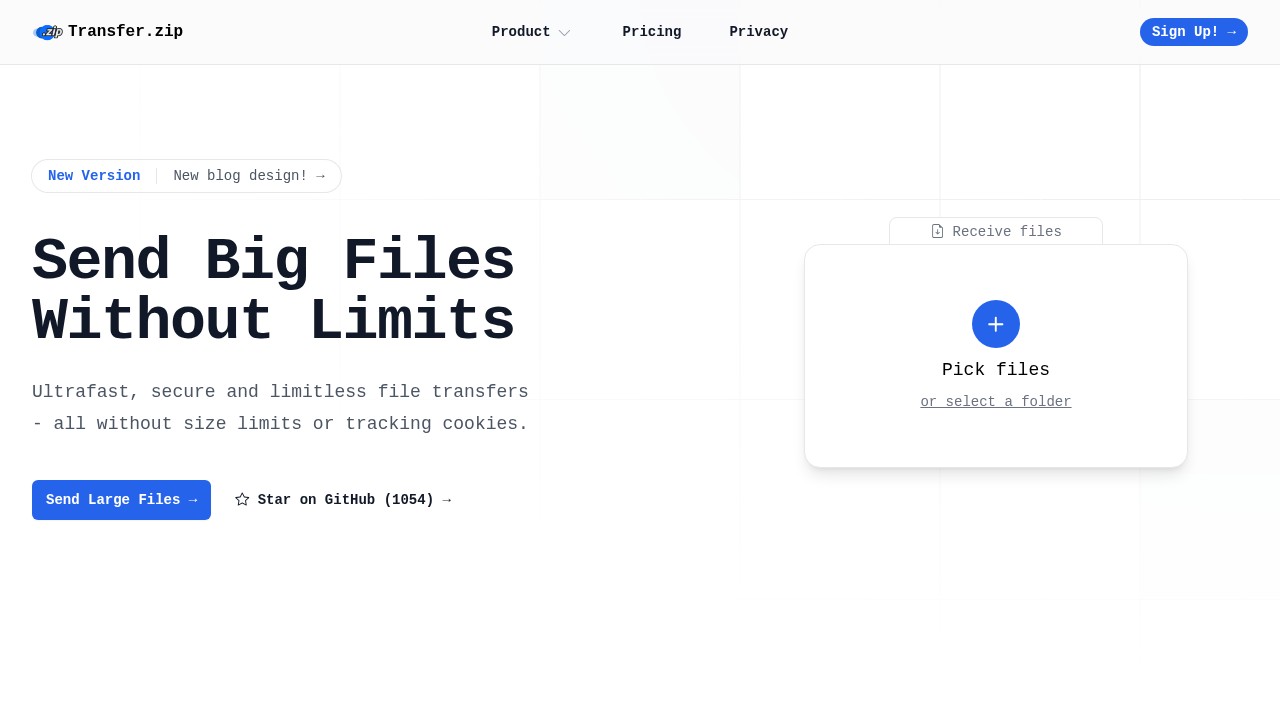How to Share Big Files Fast in 2025
Sharing big files is a huge challenge for so many people. Maybe you try to send a big video to your coworker on email, but it bounces back. Or you are a designer or engineer and have to send a huge project file fast to a client. You want speed, privacy, and just something that works without strange limits or popups. Let's look at easy, fast, and safe ways to send large files in 2025 and which tools people use the most.
Why Sharing Big Files Matters
More jobs need fast file sharing now. Video makers, photographers, software developers, teachers… almost anyone at some point gets stuck with a file too big for email. Sometimes these files are huge - 20GB, 100GB, or more. You want simple ways that actually work without asking people to sign up, and you want your data to be private and safe, too.
Problems with regular file sharing:
- File size limits (like Gmail's 25MB limit)
- Annoying sign up steps for receivers
- Slow speeds
- Popups or ads everywhere
- Poor privacy and data tracking
The Best Tools to Share Big Files Fast
Online tools and cloud services are common options in 2025 (as HP Tech Takes explains, see this high-authority guide). But most people want something:
- Fast for uploads and downloads
- No annoying ads or popups
- Good privacy policies
- Works on any device
Let's compare some top choices:
1. Transfer.zip
What makes Transfer.zip different?
Transfer.zip is a privacy-focused file transfer tool where you can share files of any size. There's no size limit. If you need to send a 300GB video, you can do that. Even the free account lets you use their "Quick Share," which streams files directly (so nothing saved on the cloud). Every file uses strong encryption, and they refuse to use tracking cookies. Send to up to 200 emails at once.
Strengths:
- No file size limits at all
- End-to-end encryption always
- No tracking or forced cookie popups
- Easy dashboard and controls for file expiry and stats
- Compress or convert files online with their extra tools
Weaknesses:
- To store a file longer than a short session, you need a paid plan
- Fewer “collaboration” features compared to some cloud apps
Try it here: https://transfer.zip
2. WeTransfer
WeTransfer is one of the best-known tools for big files. They let you upload and send files (usually up to 2GB for free). The process is simple: upload, enter the recipient's email, and the link is sent.
Strengths:
- Simple and fast for average use
- No account needed for small files
Weaknesses:
- 2GB max per file for the free plan
- Files expire after 7 days
- Ads and tracking cookies by default
- Limited privacy compared to Transfer.zip
3. Google Drive/Dropbox
If you already use Google or Dropbox, it's easy to send stuff right from your cloud folder. Just upload the big file, get a link, and send it off. Both now offer features that help with big files, but there are size and account limits (Google's free cap is 15GB for all files and mail combined).
Strengths:
- Good for ongoing team collaboration
- Syncs with your other files and devices
Weaknesses:
- Speed depends on internet and device
- Must have an account, receiver might need one too
- File size or storage maximums (for free plans)
- Lots of tracking and data sharing
Other Methods
There are also offline options like external hard drives or using a direct network connection (like with a special USB cable between PCs). Those are usually faster only for people in the same room or office, and you can’t beat the simple online method for sharing globally.
File Sharing Tips
- Try to compress files before sending (use zip or other formats)
- Split files if needed, but only if your tool requires it (Transfer.zip and Google Drive do not for most sizes)
- Always check the service’s privacy philosophy (many cloud services scan or analyze your uploads)
- Make sure your connection is good so the upload does not break partway
FAQ
1. What’s the fastest way to share a 50GB file online?
If both sender and receiver have good internet, tools without file size limits like Transfer.zip or using a paid Google Drive/Dropbox plan work best.
2. Are file transfers private and safe?
Not always. Many tools store your files on their servers and might scan or track them. Look for services using end-to-end encryption and clear privacy policies.
3. Why won’t email work for big files?
Email services limit attachment sizes, usually around 25MB, which is too small for photos or videos. That’s why you need special transfer tools.
4. Do I have to make an account for every service?
Not always. Some tools (like WeTransfer free and Transfer.zip’s Quick Share) let you send files without making an account.
5. How long do uploaded files stay online?
It depends on the service. Free tools often delete after 7-14 days, while paid plans like on Transfer.zip can keep files for up to a year.
Big file sharing is way less stressful if you pick the right tool. For me, Transfer.zip is the choice if I want simple and private sending, no file size headaches, and zero tracking. WeTransfer or cloud drives work for lighter use, but those size caps and privacy stuff are getting annoying now. Try more than one if you need! Just don’t email those huge files again... it was never a good deal.
